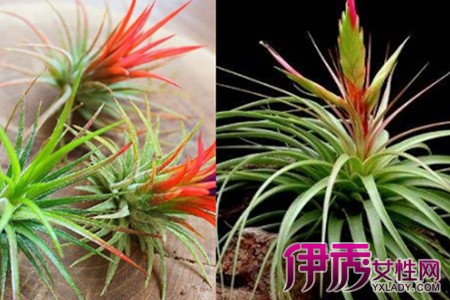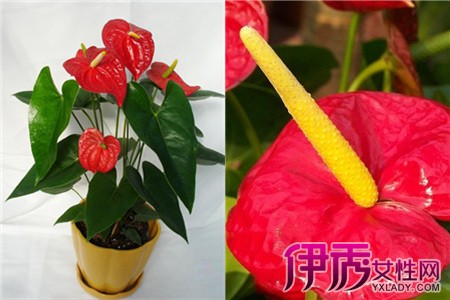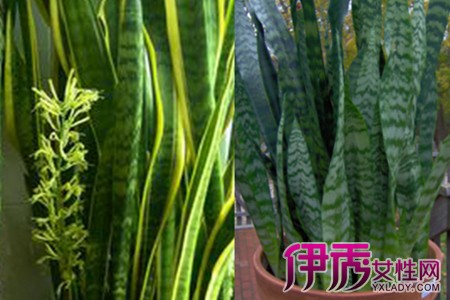Understand how the air pineapple grows quickly and become a qualified florist

In fact, the cultivation of air pineapple is not difficult at all, as long as you master the habits of air pineapple, it is easy to grow. The first thing is to choose a good flowerpot. Air pineapple likes flowerpots with good breathability, so you must have holes below. This kind of flowerpot is suitable for the root growth of air pineapple, and the root will not be blackened.
After finding a suitable flowerpot, choose fertile soil, but the choice of soil can not be random soil, to find that kind of leaf rotten black soil is very suitable for the growth of air pineapple, and such soil is very loose, it has a very good effect on the growth of plants. Do not use loess, loess has a great impact on the root of air pineapple, which is not conducive to growth.
Then there is the temperature. The suitable temperature for the air pineapple is about 22 degrees. It is very cold in winter in the north. You must not put the air pineapple in it. If it is lower than 5 degrees, it will cause frostbite. It is very difficult to survive, or you should choose to put it indoors, but don't put it under the heater.
Must be well controlled in watering, about 3-5 days watering can, usually can use a spray can to spray some water on the leaves, the whole plant will look very clean, if the soil in the flowerpot is not dry, it does not matter if you can water it 2 days later.
It should also be noted that air pineapple is easy to recruit small flying insects in autumn, in this case, it is necessary to use pesticides, do not spray water after spraying, about 2 days in the spray, water spray early affect the effect of the drug. Master these farming methods your air pineapple must grow very fast, it is really a different scenery to put it at home. If there is no air, just buy a pineapple.
How to raise pineapple flowers? Detailed explanation of protected cultivation techniques of pineapple flowers
With the improvement of people's living standards, more and more people have a growing demand for flowers. Among them, pineapple flowers are also the best-selling varieties of flowers, so many flower farmers began to cultivate pineapple flowers. So, how to raise pineapple flowers? Below, the editor of Huinong Network will tell you about the cultivation techniques of pineapple flower facilities in detail.
1. Cultivation
1. Temperature
The suitable temperature of ornamental pineapple should be between 21-28 ℃ in daytime and 18-21 ℃ at night, the highest temperature should not be higher than 35 ℃ and the lowest temperature should not be lower than 15 ℃.
two。 Humidity
Pineapples like high humidity, and the air humidity should be maintained at 75% to 85%. When the humidity is less than 50%, the leaf will curl inward and the leaf tip will scorch. But the humidity should not be too high, too much humidity, the plant leaf cup will be heartbroken. The greenhouse should be ventilated under the condition of high temperature and humidity. In order to increase humidity and ensure robust plant growth, foliar water spraying should be carried out frequently, once in the morning and afternoon in spring and autumn, once at noon in winter, and many times in summer according to the humidity of the greenhouse.
3. Light
The suitable light intensity of pineapple is 18000~20000Lux. If the light is too strong, the color of the leaves will decrease and there will be spots, which will burn the leaves seriously. If the light is too weak, it will cause the plant to grow too much. The light is strong in summer, on a sunny day, the first layer of sunshade should be carried out around 8: 00 in the morning, 75% shading net should be used, and the second layer shading should be used when the temperature rises to 28: 30 ℃.
4. Fertilizer and water management
Pineapple has strict requirements on water quality, and deionized pure water is generally used. The EC value of fertilizer and water should be controlled between 0.8 and 1.0, and the pH value should be controlled between 5.5 and 6.5. As the root system of pineapple is weak, the nutrients needed for growth are mainly absorbed from the base of the leaf cup, so it is necessary to keep the leaf cup with sufficient nutrient solution for its absorption. Summer and autumn is the peak growing season, and the evaporation is large, so the water demand is also increased, watering the leaf cup once every 4-5 days and watering the medium every 10 days or so to keep the leaf cup watery and the medium moist. In winter, water the leaf cup once a week, the medium is not dry and does not water, the root is too wet and rotten.
The fertilizers are used alternately with two kinds of fertilizers: P20purl 10vis20 + magnesium sulfate and potassium nitrate + magnesium sulfate. The preparation method of the mother liquor of the fertilizer is as follows: P20pura 10pura 2059g kg L + magnesium sulfate 8g 8g/L, potassium nitrate 59g kg L + magnesium sulfate L + magnesium sulfate. The working liquid is mother liquid: water = 1: 100. Apply fertilizer with water and apply thin fertilizer frequently. During the growing period, the EC value should be controlled between 0.8 and 1.0, and the pH value should be between 5.5 and 6.5, and the EC value could be increased to 1.2 after blooming.
2. Promoting flowering
When the pineapple reaches the age of 20 to 25 leaves, it can destroy the flowers.
1. Preparation for promoting flowering
2 weeks before blooming, stop applying any fertilizer and only water; when you do so, pour out the water in the pineapple leaf cup one day before flowering.
two。 Blossom induction method
Acetylene saturated aqueous solution to promote flowering. First of all, connect the acetylene pipe with the bucket, open the total pressure gauge, then open the partial pressure gauge to keep the partial pressure meter at 0.5Pa, and then set the flow meter at 0.3m3/Pa so that the water in the bucket can tumble. According to the amount of water, the inflation time can be adjusted. Generally, when 50L water is inflated with 30min, it can reach the state of saturation, and there will be a strong smell of acetylene in the water. Irrigation can be carried out, generally the amount of 250~300mL per plant, but also according to the size of the plant to determine the amount. In the process of irrigation, keep inflated, and require containers and water pipes to be clean and clean.
Flowering induction is usually repeated 4 times, each time at an interval of 2 days, and the temperature should be controlled at 15: 18 ℃. Flowering should be carried out before dawn, and it is best not to see strong light within 1 hour after flowering, so as to avoid acetylene evaporation. Spray water on the leaf surface as much as possible within 1 week after flowering, only water was irrigated within 2 weeks, and fertilizer was started in the third week. For the first and second times, potassium nitrate 59g kg L + magnesium sulfate 8g/L was irrigated twice in succession. After 40-60 days, the leaves in the center of the leaf cup began to turn red.
The planting method of lavender: a quick look at the summary of the breeding experience of florists
Lavender is a kind of flower plant that we are very familiar with. It can be planted in pieces or potted, and it can be used in home decoration. Lavender is a very attractive flower. Let's take a look at its breeding methods:
Basic information about lavender:
Lavender (scientific name: lavandula pedunculata), also known as perfume plant, Ling vanilla, vanilla, yellow vanilla, etc., belongs to the Labiatae lavender genus, native to the Mediterranean coast, Europe and Oceania islands, and then widely cultivated in the United Kingdom and Yugoslavia. Its leaf-shaped flowers are beautiful and elegant, and the blue-purple inflorescences are long and beautiful. It is a new perennial cold-resistant flower in the courtyard. It is suitable for planting flowers in clusters or strips, and can also be watched in pots.
Culture methods of lavender:
1. Watering: lavender does not like the retention of water in the roots. After one-time watering, the soil should be fed again when the soil is dry. The surface culture medium is dry, the interior is moist, and the leaves wilt slightly.
2. Sunshine: lavender is an all-day plant, which needs plenty of sunshine and humid environment. The environment that can give full sunshine is better. Half-day sunshine can also grow, but flowering is rare. Summer should cover at least 50% of the sun and increase ventilation to lower the ambient temperature, so that although the growth is weak, it does not die.
3. Temperature: lavender is semi-heat-resistant, cool, warm in winter and cool in summer, the optimum temperature for growth is 15: 25 ℃, it can grow at 5: 30 ℃, and the top stems and leaves are withered and yellow higher than 38 ℃ for a long time. In northern China, dormancy begins when it is below 0 ℃ for a long time in winter, and the seedlings can tolerate a low temperature of-20 ℃ per square meter during dormancy.
4. Fertilization: lavender should not be fertilized too much, otherwise the fragrance will fade.
5. Pruning: pruning must be carried out after flowering, and the plant can be pruned to the original 2 + 3. The plant type will be sturdier and conducive to growth.
Lavender is a very popular flower, beautiful color, flower fragrance, layout at home to give people a comfortable and romantic feeling, and lavender has a tranquil role, can help sleep, is a good flower.
- Prev

How to apply Anthurium andraeanum fertilizer to plant beautiful plants
Anthurium andraeanum is a kind of garden plant with great ornamental value. So, is there anything very important to pay attention to in the cultivation of Anthurium andraeanum? How should it be fertilized? In view of the above problems, this article will explain in detail how to plant Anthurium andraeanum.
- Next

Learn how to raise tiger skin orchid to make your flowers more luxuriant
When it comes to Tiger Pilan, we are no stranger. Many people like to put a pot at home, but many people don't know much about how to breed Tiger Pilan. The editor will introduce the breeding method of Tiger Pilan to you today.
Related
- Fuxing push coffee new agricultural production and marketing class: lack of small-scale processing plants
- Jujube rice field leisure farm deep ploughing Yilan for five years to create a space for organic food and play
- Nongyu Farm-A trial of organic papaya for brave women with advanced technology
- Four points for attention in the prevention and control of diseases and insect pests of edible fungi
- How to add nutrient solution to Edible Fungi
- Is there any good way to control edible fungus mites?
- Open Inoculation Technology of Edible Fungi
- Is there any clever way to use fertilizer for edible fungus in winter?
- What agents are used to kill the pathogens of edible fungi in the mushroom shed?
- Rapid drying of Edible Fungi

